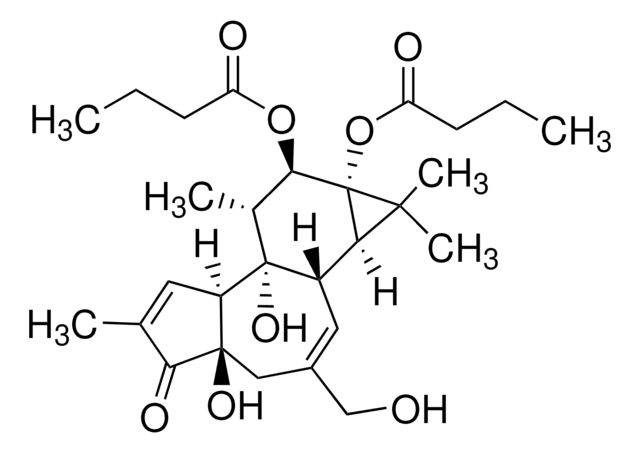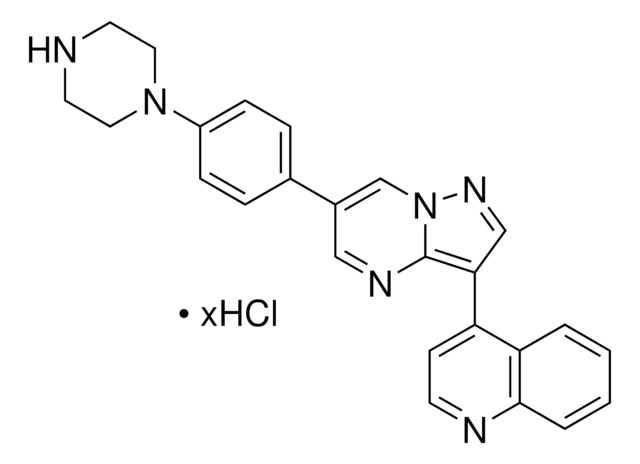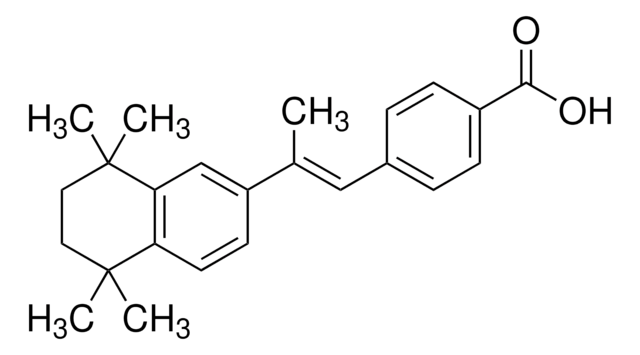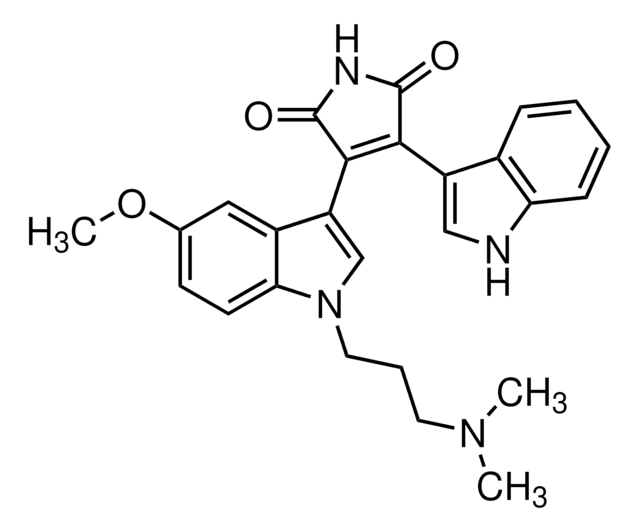524390
Phorbol 12,13-dibutyrate
≥99% (HPLC), solid (crystalline), PKC activator, Calbiochem
Synonym(s):
Phorbol-12,13-dibutyrate, PDBu, PKC Activator II
About This Item
Recommended Products
Product Name
Phorbol-12,13-dibutyrate, Strong irritant for mouse skin, but only moderately active as a tumor promoter.
Quality Level
Assay
≥99% (HPLC)
form
solid (crystalline)
manufacturer/tradename
Calbiochem®
storage condition
OK to freeze
color
white to pale yellow
shipped in
ambient
storage temp.
−20°C
InChI
1S/C28H40O8/c1-7-9-20(30)35-24-16(4)27(34)18(22-25(5,6)28(22,24)36-21(31)10-8-2)12-17(14-29)13-26(33)19(27)11-15(3)23(26)32/h11-12,16,18-19,22,24,29,33-34H,7-10,13-14H2,1-6H3/t16-,18+,19-,22-,24-,26-,27-,28-/m1/s1
InChI key
BQJRUJTZSGYBEZ-YVQNUNKESA-N
General description
Biochem/physiol Actions
Na+,K+- ATPase
Packaging
Warning
Preparation Note
Reconstitution
Other Notes
Lee, E.J., et al. 1994. Brain Res. 665, 127.
Critz, S.D., et al. 1993. J. Neurochem.60, 1175.
Iredale, P.A., et al. 1993. Biochem. Pharmacol.45, 611.
Critz, S.D., and Byrne J.H. 1992. J. Neurophys.68, 1079.
Hortelano, S., et al. 1992. J. Biol. Chem. 267, 24937.
Ward C.A., and Moffat, M.P. 1992. J. Mol. Cell. Cardiol.24, 937.
Legal Information
Signal Word
Danger
Hazard Statements
Precautionary Statements
Hazard Classifications
Acute Tox. 1 Dermal - Acute Tox. 1 Inhalation - Acute Tox. 2 Oral - Carc. 2 - Eye Dam. 1 - Resp. Sens. 1 - Skin Corr. 1B - Skin Sens. 1
Storage Class Code
6.1A - Combustible acute toxic Cat. 1 and 2 / very toxic hazardous materials
WGK
WGK 3
Flash Point(F)
Not applicable
Flash Point(C)
Not applicable
Certificates of Analysis (COA)
Search for Certificates of Analysis (COA) by entering the products Lot/Batch Number. Lot and Batch Numbers can be found on a product’s label following the words ‘Lot’ or ‘Batch’.
Already Own This Product?
Find documentation for the products that you have recently purchased in the Document Library.
Customers Also Viewed
Our team of scientists has experience in all areas of research including Life Science, Material Science, Chemical Synthesis, Chromatography, Analytical and many others.
Contact Technical Service












